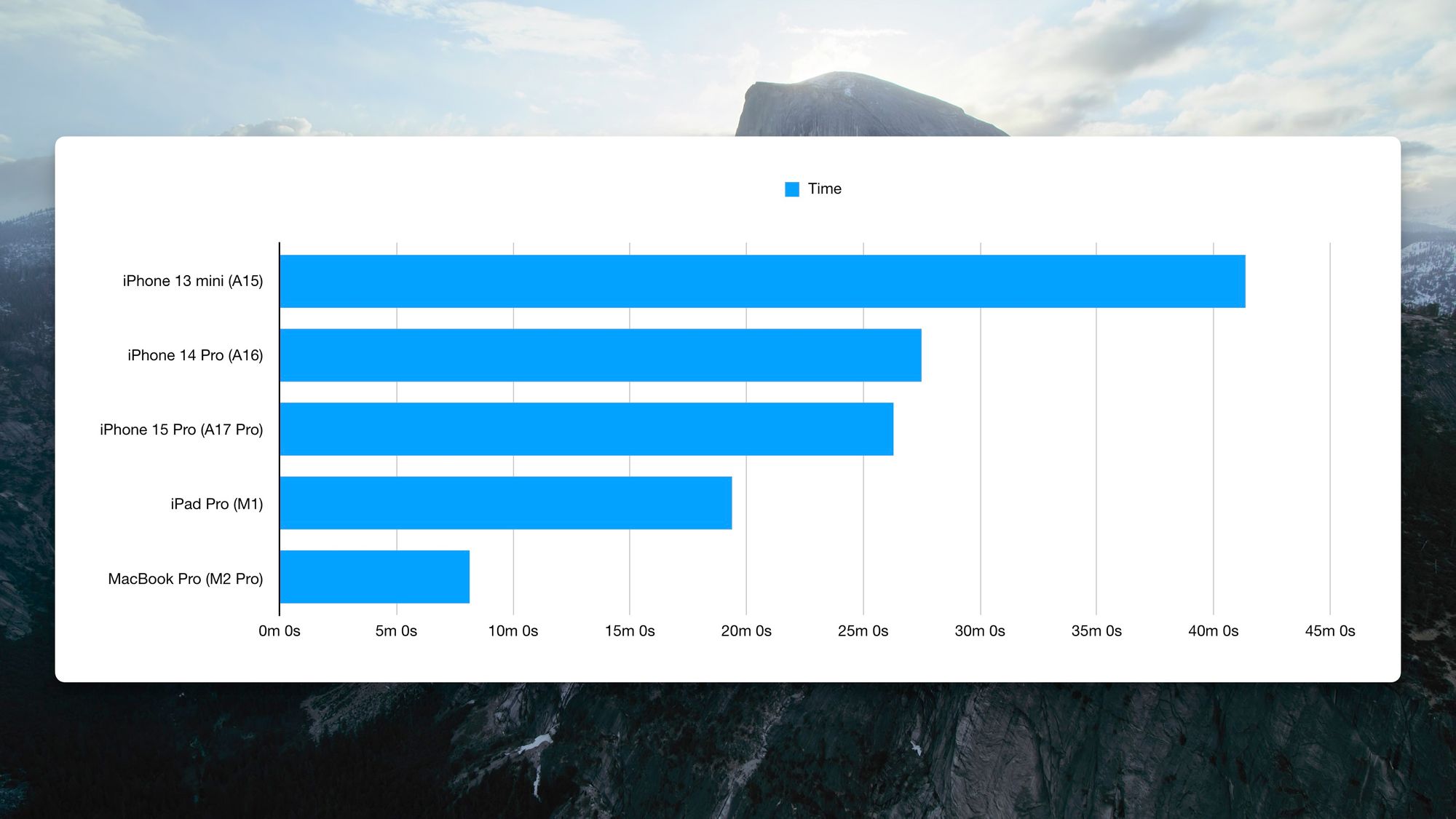Benchmarking the A17 Pro
With the rise of universal apps and consistent silicon across Apple's entire line of devices, from phones to tablets to desktops, where you decide to do your work has become more flexible than ever for Apple users. As someone who is interested in performance metrics, it also gives me a good chance to run relatively like-for-like benchmarks across Macs, iPads, and iPhones to see how much oomph each variant of Apple's custom silicon has.
Today's test
Something I do a lot is generate transcripts using the app Transcriptionist. It uses OpenAI's Whisper tech to generate shockingly accurate transcriptions of audio or video files. I use this for YouTube videos, and it works great for me. I also know from Activity Monitor on my Mac that the app lights up basically all of my M2 Pro's CPU cores while it's working, so I expect/hope that it's doing the same on iOS and iPadOS.
I processed my audio track from a recent episode of iPad Pros I was on, which was a 740MB WAV file which was 63 minutes long. I used the "Small (English Only)" model for this, as it was the most advanced model I could get to run on all of my test devices.
As for devices, I used what I had access to. A more professional establishment would idally have more devices (especially on the Mac side), but I am but a simple blogger with a larger-than-average collection of Apple hardware. Devices tested were:
- iPhone 13 mini
- iPhone 14 Pro Max
- iPhone 15 Pro
- 11" iPad Pro (M1)
- 14" MacBook Pro (M2 Pro, 12 CPU/19 GPU)
Results

| Device | Time |
| iPhone 13 mini | 41m 22s |
| iPhone 14 Pro Max | 27m 30s |
| iPhone 15 Pro | 26m 18s |
| iPad Pro (M1) | 19m 23s |
| MacBook Pro (M2 Pro) | 8m 9s |
I'll let the numbers speak for themselves, and I do think they tell basically the story one might have expected, but I will add a few thoughts I have after seeing these numbers.
- On a long task like this, I wonder if the major performance jump from the 13 mini to the 14 Pro Max is caused by a major jump from the A15 to the A16 processor, or if it's more to do with the added space inside the Pro Max allowing for more performance on longer tasks.
- The jump from the A16 to A17 Pro was basically nothing.
- For sustained, intense work, Apple's M series of chips are able to really flex their muscles. On shorter, more single-threaded tasks, I would bet the iPhones hold their own quite a bit better.


